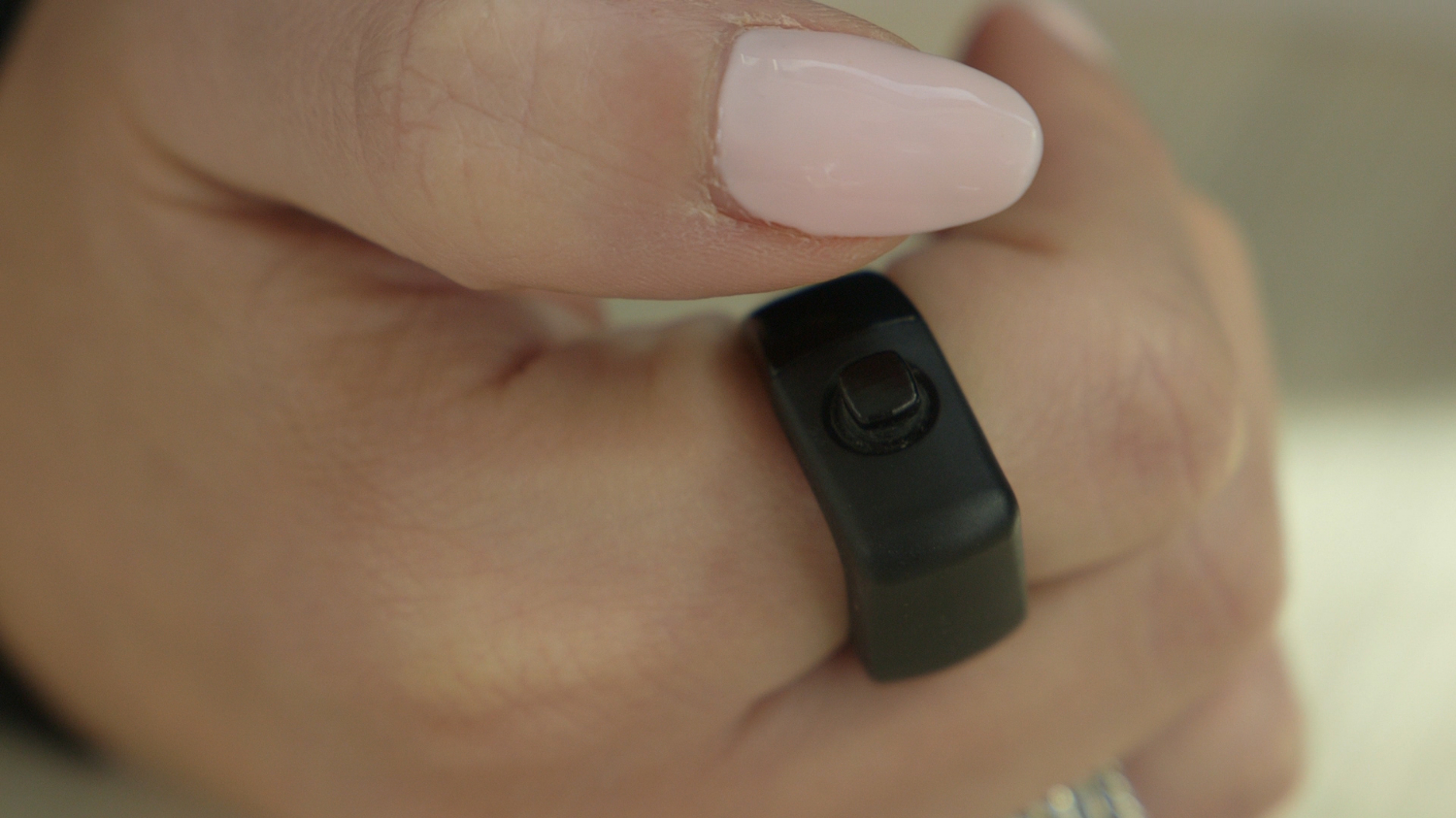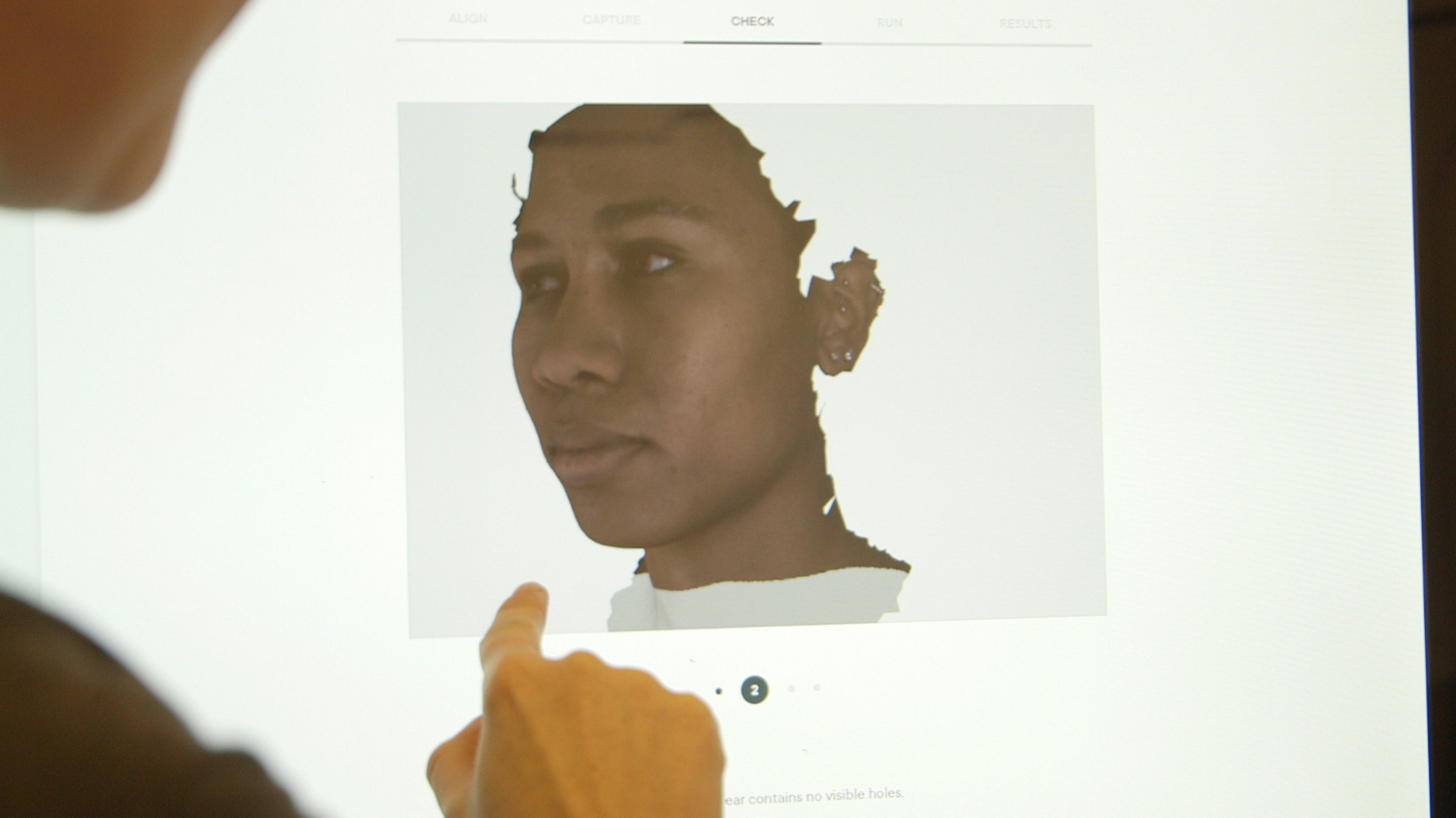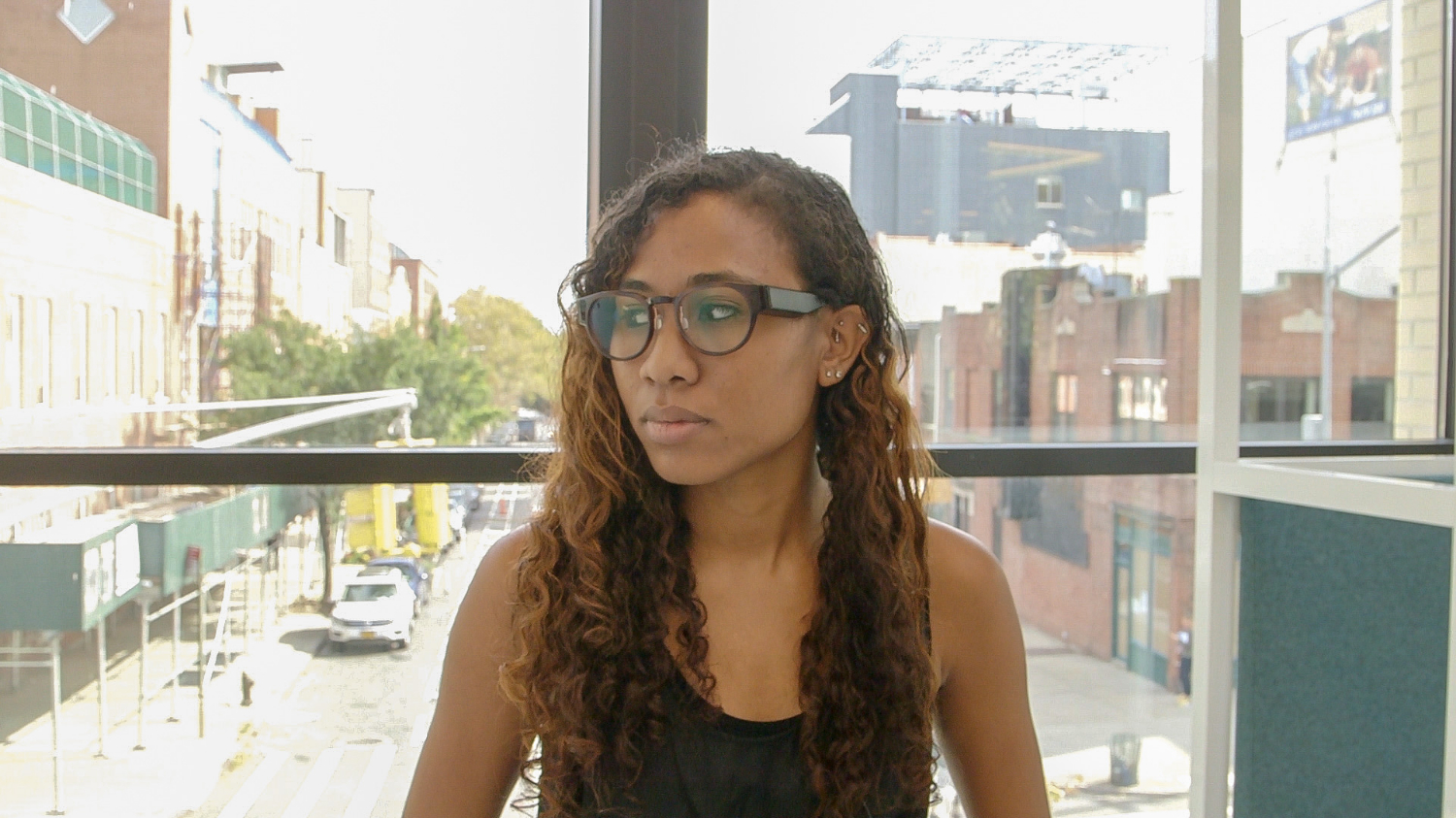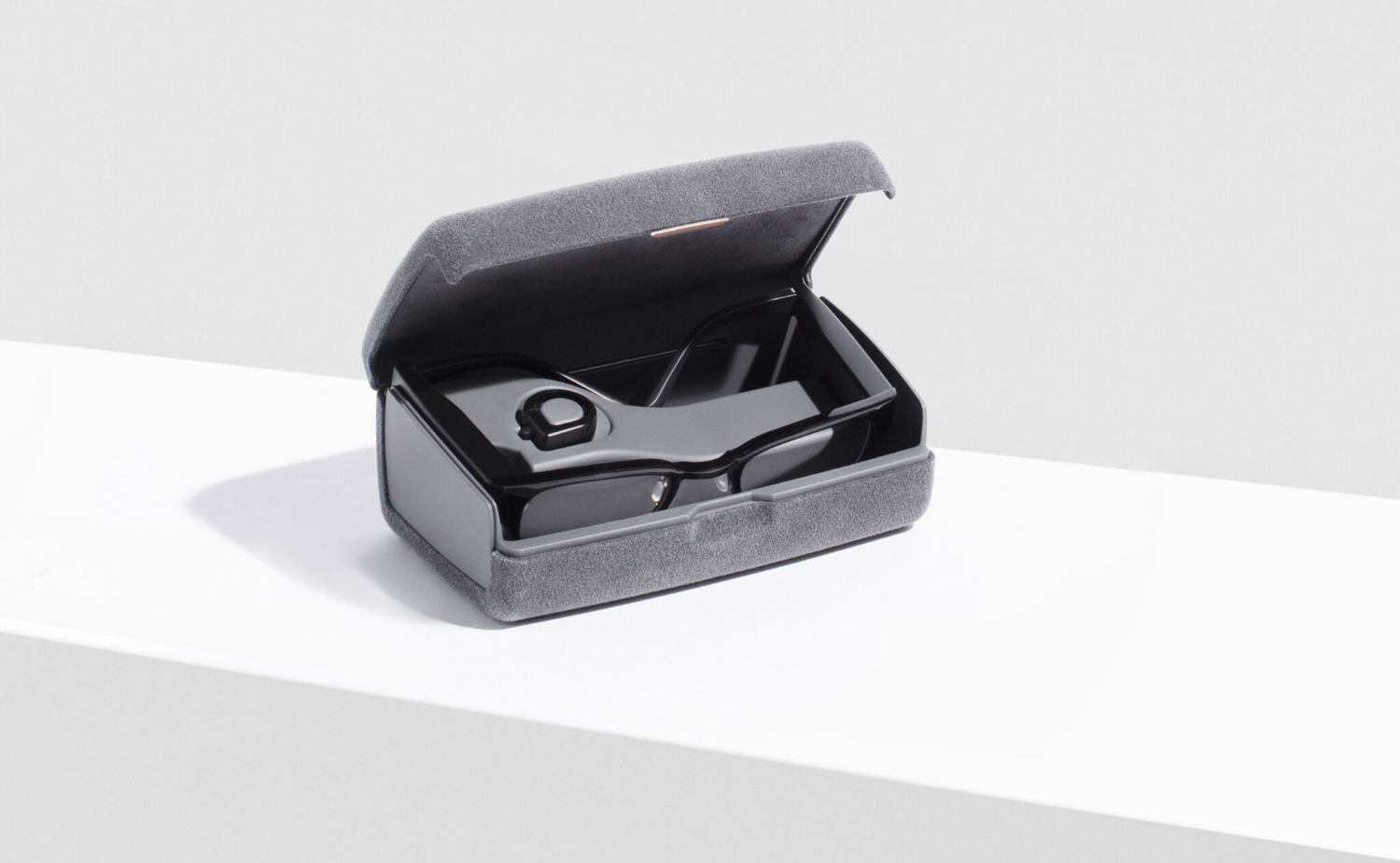Can Focals Prescription Specs Actually Make Smart Glasses Cool?
What if you could stealthily confirm dinner plans via text during a meeting, without taking out a device or speaking? How much would your navigation skills improve if step-by-step directions were projected right in front of your eyes? And how much more socially acceptable would you find smart glasses if they always looked and worked like regular prescription glasses, even when you’re using apps? North’s new Focals are not your robot’s smart glasses; they do all of the above and more.
What Are North's Focals Smart Glasses?
Focals ($999 USD/$1,299 CAD) differ from the failed likes of Google Glass and other consumer smart glasses in that they actually look like regular prescription glasses. Vuzix has a similar approach with its Vuzix Blade smart glasses, but I’d argue those look more like ‘90s-style sunglasses. Even more impressively, the graphics displayed on Focals are only visible to the wearer (unlike with Vuzix Blade), so no one would even know you’re wearing smart glasses. You also have to get fitted for Focals, which means two mandatory trips to either North's Brooklyn or Toronto location.
Focals can replace your normal glasses with prescriptions of -4 to +2SPH and 0 to -2CYL, but you’ll have to know your prescription because North doesn’t offer eye exams. Shoppers can choose between classic or round styles and black, tortoise or gray fade colors. If you have 20/20 vision (I’m very jealous), you can also use the glasses with no prescription.


Besides looking good, Focals offer the ability to navigate apps by syncing with Android and iOS devices. With the spectacles, you can read and respond to texts with pre-written responses (including emojis) or voice activation, see directions, the weather, your calendar and appointments and even operate Amazon Alexa or call an Uber. North says Focals can talk to Alexa regardless of your location, and Alexa answers via the display or a small speaker/microphone by the glasses’ right arm.
Focals come from North, the wearables company formerly known as Thalmic Labs. Thalmic launched in 2012 and has raised over $140 million in funding, including from big-name backers like Amazon Alexa Fun and Intel Capital. Its only product before today was the Myo motion-activated armband. This month, the firm announced the end of Myo. Under its new North branding, the company has its eyes set on smart glasses.
Here are Focals' current features:
- Messages: Read texts and respond via smart replies, emojis or voice activation
- Turn-by-turn directions
- Calendar with pop-up reminders
- Amazon Alexa: Access Alexa from any location through Focals' microphone. See responses in augmented reality (AR) or via voice.
- Call an Uber
Controlling Focals With the Loop Ring
Another thing that’ll make you look twice at Focals is the fact that you never have to touch them to navigate the tech. Wearers navigate Focals with Loop, a thick ring with a tiny joystick in the middle that moves up, down, left, right and in to work the UI.
Get Tom's Hardware's best news and in-depth reviews, straight to your inbox.
In my short time with the Loop, I didn’t get the controls down pat, but the navigation is pretty simple once you get the hang of it. More importantly, Loop fit comfortably on my finger and is not uncomfortably large.
The Focals also have a teeny, tiny speaker by the right arm that makes a small clicking noise when you move the Loop’s joystick, if you desire. I found this comforting, especially if you’re new to smart glasses, because it’s a confirmation that Focals are receiving your commands.
The Loop itself looks inoffensive. It’s available in all black or white with copper. I didn’t get to see the latter in person, but I’d still prefer it over the black, which looks more plastic and cheap than a ring I’d typically buy for daily wear.
Focals: Eyes On
I went through the initial Focals fitting process in North’s new store in Brooklyn, N.Y. To ensure my Focals would fit perfectly, North needed a face scan. Because of my lavish locks, I had to tie up my hair before my scan. Luckily, North has headbands on deck for use (and yes, they’re for keeps).
I sat on a stool (with a hip wooden design, might I add) and looked into a screen split into two sections: one had fake virtual glasses for me to align my eyes into, and the other had one small space for me to line up my right ear. Once I was ready, the optician hit a button on a computer behind me, and all I had to do was stare at a small white dot for about 10 seconds for the scan to complete.
My first scan was a bit off, most likely because of my aforementioned wild locks. But there was no need to fear; North had a plastic band they fit around the back of my head that had sensors to help the computer more easily see my ears. Afterwards, the computer in the booth had a freaky 3D image of my face; seeing it was an experience in itself.
Following the scan, I tried on different Loop rings to find the right fit. Next, shoppers pick out their design and style, and eventually return to the store to try on the specs. Opticians will make sure the glasses fit perfectly (adjusting nose pads and such) and that you can clearly see in AR.
Once North ensured the glasses fit and that I could see the AR properly, I took the Focals for a test look. The first thing I noticed was how simple yet colorful the text and images were. Clean lines led to less distracting text, while vivid, polychromatic icons (and some text) kept things fun and darn right adorable.
From cute blue calendars, small sun or cloud icons for the weather, subtly colored dumbbells or muscles for workout appointments or gradient check symbols and text bubbles, much of the UI had subtle colors or even a gradient effect. Focals show you more than boring black-and-white words; you can still enjoy the multi-colored fun you get with a smartphone. Besides, we waited years for phones with color screens, why make smart glasses compete with that?
Any images I saw automatically disappeared on their own after a few seconds. I could bring up the home screen, which features the time and date, at any time by pressing the Loop’s joystick in. All AR displayed on the glasses was pretty small; the goal is for it to not to be overly distracting, but they were also as small as they can get without making me inclined to squint.
And as promised, when I was using the Focals’ tech, no one could see the graphics and text besides me. Images are only visible in the right eye.
A Little Heat
After about five minutes working through the Focal’s functions, I noticed they were warm by my right ear. I was told that this was because I was using the glasses’ AR for a long duration. They expect people would typically use the AR for just seconds at a time. However, this doesn’t bode well for using the smart glasses for navigation or having back-and-forth text conversations. And I don’t know how the glasses would’ve fared if I kept pushing it longer.
No AR-ing and Driving!
North’s vision is to offer tech that lets you stay connected but doesn’t distract you from the real world. As such, it’s recommended you do not use the Focals’ AR while driving.
Despite Focals’ efforts, I personally found the images and text distracting. Blame it on my love of pretty colors, my susceptibility to distractions, or my fascination with tech, but whenever something was projected onto my Focals, that was definitely the only thing I was focused on.
Are Smart Glasses Cool Now?
If you’re a skeptic, you probably wondering how Focals can succeed where other smart glasses haven’t. North CEO and co-founder Stephen Lake told me North looked to differentiate by focusing on the glasses’ looks first and building the tech around that, instead of the other way around.
“We spent most of the last four-and-a-half, five years making all the ingredients needed to actually make the product possible in an amazing form factor,” Lake told Tom’s Hardware.
Instead of implanting a small screen into a pair of glasses, North equipped Focals frames with a tiny projector that reflects small rays of light out of the glasses’ sides and onto a barely visible holographic element inside the prescription lens. That holographic piece makes those rays of light reflect back onto the eyes.
“You’re not looking at a display here. You’re not trying to focus on something. You’re just looking at the world, and we’re adding light to the world around you,” Lake explained.
Focals follow through on offering discreet AR no one will know you’re using. And with their traditional-yet-fashionable styles, they compete well with regular prescription frames.
However, I am worried about the battery life. Focals charge in their included case (pictured above) and last up to 18 hours, but we all know batteries can have shorter life spans than manufacturers claim, especially if you use it a lot. And with that heat I felt after a few minutes of continuous use, I know that battery is putting in work. Having yet another device to remember to charge daily doesn’t thrill me. On the other hand, should the battery die, you’d still have a functioning pair of glasses. However, if you bought Focals, you assumedly want more than that.
The other limitation is the ring. You can’t control any of the Focal’s features without the Loop, which also needs to be charged, although its battery life is up to three days. Still, the Loop can be inhibiting if you don’t like jewelry or the ring's style or might just forget to put it on sometimes.
Finally, $999 USD/$1,299 CAD is a lot to pay for a pair of glasses, especially since that doesn’t include an eye exam. For that much money, I’d prefer the convenience of getting an eye test and glasses fitting through one location and purchase. You also can't get the glasses with progressive lenses, which leaves out consumers with more complex prescriptions. And you have to be able to get to North's Brooklyn or Toronto stores in order to buy Focals.
Still, North did a big thing by bringing style and mainstream taste to the smart glasses field. I’m excited to see what other partnerships the company is able to accrue for even more functionality between the specs and popular apps (Uber and Alexa are great starts).
If you’ve ever dreamed of trying out smart glasses but feared social backlash or looking like a nerdy, self-important robot, your time is now. With Focals, no one will know that you’ve dived eye-first into AR. We still can’t help people calling you Four Eyes though.
Focals are available for pre-order today for $999 USD/$1,299 CAD. The price includes Focals, a fitting, Loop, a charging case for both pieces and clip-on sunglass lenses. To get your eyes on Focals, make an appointment at their Brooklyn or Toronto location through the North website. Stores open in early November, and first units will ship by the end of 2018.

Scharon Harding has over a decade of experience reporting on technology with a special affinity for gaming peripherals (especially monitors), laptops, and virtual reality. Previously, she covered business technology, including hardware, software, cyber security, cloud, and other IT happenings, at Channelnomics, with bylines at CRN UK.
-
techy1966 I am not a fan of this big glasses trend in general. I am not into looking like I just stepped out of the 60's & 70's. With that said these glasses take that even farther yes they do more than what a regular set of glasses do but OMG those things make the lady in the video look a bit odd as they are way way over sized for her face and just look very ugly the glasses I mean look ugly had to clarify that.Reply
If they can down size the frames as in make them thinner and down size the ear arms so they are not big and bulky they could be pretty cool to use. -
Co BIY This tech is big progress and should get North bought out by Google,Apple or Amazon. Sounds like very few pairs will actually be sold and used now but 10 years from now this will be totally viable tech.Reply




